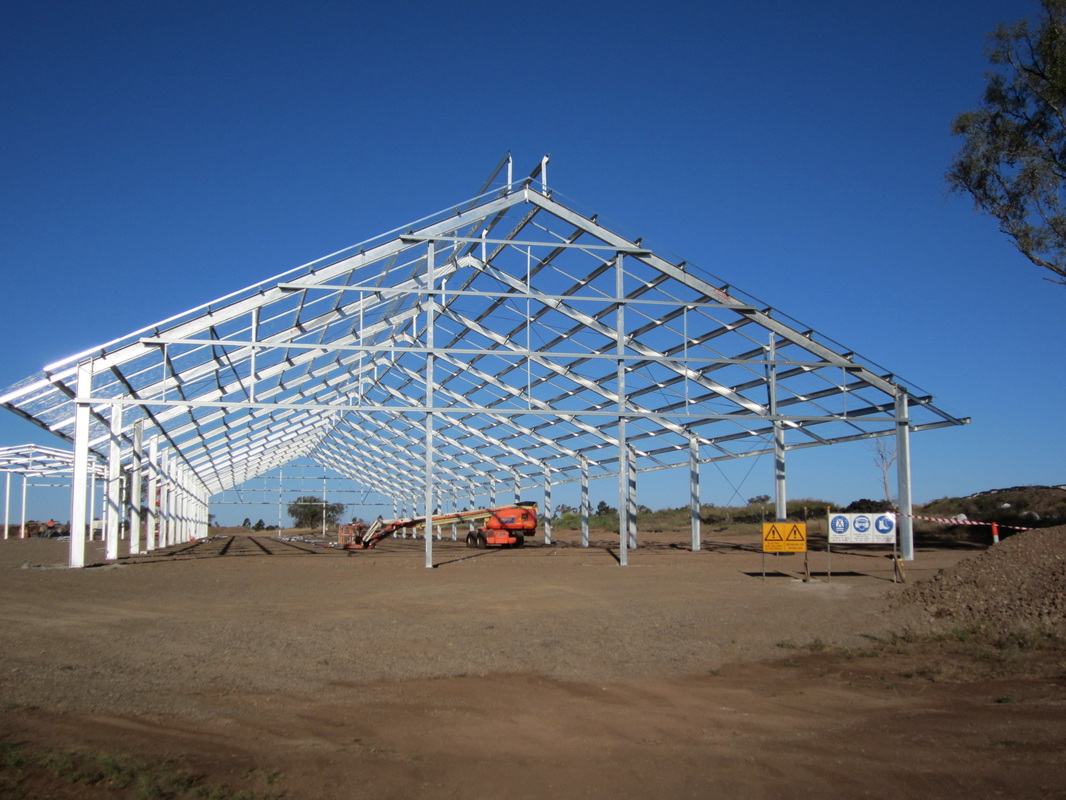Short answer – it depends. In this article we talk about the time and budget required to build a warehouse. We also estimate how much it costs to automate a warehouse. We also explore some prominent warehouse automation companies in Europe and the US and highlights their contributions to the industry.
Table of Contents
Globally speaking the time needed to build a warehouse has declined in the past 10 years. There are still big differences, even between countries in developed economies. For example, one of the best-performing countries according to the World Bank in terms of time required are Singapore (41 days in 2018) and United Arab Emirates (50.5 days in 2018). At the same time in the United Kingdom you can become a warehouse owner in 86 days. Compare that to 183 days in France or 126 days in Germany.
While building times are declining, the costs to build high-tech modern warehouses have skyrocketed. This has been further fueled by rising property prices and the demand for last-mile distribution centers in metropolitan areas (we covered this topic in our report on Polish warehouse market outlook).
What Does it Cost to Build a Warehouse?
Custom, Pre-Engineered warehouse buildings range from $10-$20/ Square Foot. With turnkey prices ranging from $15,000 for a small 30×40 warehouse up to $475,000 for a 50,000 sq ft distribution center in USA.
What factors you should consider for budgeting? Depending whether you’re building a simple storage warehouse or refrigerated warehouse, for example, both construction costs and time will vary. Some factors that affect costs and time include:
- TYPE OF WAREHOUSE. Are you building a traditional bulk storage warehouse with fork lifts ? Or are you implementing an automated workflow complete with robotic systems (such as KIVA) and AS/RS conveyor systems? While additional systems and procedures will increase your initial costs you should know that billions of dollars are lost every year in warehouses – some of the losses occur because of misplacement or theft, and the rest results from stock damage.
- LAND. Land cost is a big contributor to overall expenses. Smaller spaces are the most cost-effective and, by changing storage procedures, you can take advantage of storing more in less. Also, a land with no prior infrastructure and paperwork in place can put your project over the edge if not accurately planned for.
- MATERIALS USED. Most warehouses are either built using concrete tilt-up or pre-engineered metal construction. For smaller warehouses consider pre-engineered metal structures which tend to be cheaper and faster to construct. For large warehouses and distribution centres concrete tilt-up method is more cost-effective as total area increases.
- ENERGY ASSOCIATED COSTS. While better building insulation and automatic lighting systems increase your building cost, investing into this kind of solutions will make a huge difference to your bottom line and the cost of these improvements will pay for themselves with relative speed. Another pro tip – consider reducing water consumption in little ways such as automatic flush low flow toilets and hands-free faucets.
- LEGAL REQUIREMENTS. These include time and resources for permitting, architectural design, insurance, engineering, taxes and more.
- ANALYSIS & PLANNING. Professional warehouse planning (see our Complete Guide to Warehouse Planning) can seem like a waste of time for a smaller “out of the box” warehouse setup. However, with environmental requirements getting stricter and energy prices growing it’s critical to have professionals perform both an energy-efficiency analysis and a life cycle cost analysis (LCCA). These analyses serve as a process for formally calculating the ROI you can expect from building investments, allowing you to put numbers behind your design decisions.
Estimated Costs of Building a 10,000-Square-Foot Steel Warehouse in the US
| Building Type | Cost per square foot | The basic cost to build a 10,000 square-foot warehouse | Total cost, including accessories and customization |
|---|---|---|---|
| Prefabricated building kits | $7.50 to $8.50 | $75,000 to $85,000 | $86,250 to $97,750 |
| Rigid-frame warehouse | $11.00 to $20.00 | $110,000 to $200,000 | $126,500 to $230,000 |
| Warehouse packages | $16.00 to $20.00 | $160,000 to $200,000 | $184,000 to $230,000 |
| Finished and enclosed warehouse | $20.00 to $40.00 | $200,000 to $400,000 | $230,000 to $460,000 |
How Much Does Warehouse Automation Cost?
- The cost of a system that improves picking will cost anywhere from $500,000 to $1 million
- A mechanized operating system ranges from $1 million to $5 million in costs.
- Converting to a semi-automated warehouse will cost from $5 million to $15 million
- A fully-automated warehouse tops out at around $25 million
The options are as vast as they are varied. These key factors can determine which automation options are available for your operation:
- Size and scope of the automation activities. Different levels of automation exist, ranging from a few basic automation tools to more advanced designs that incorporate systems that are fully mechanized and automated.
- The types of technologies utilized. Different types of automation technologies exist for different warehouse processes. Obviously, the more technology you incorporate and the more advanced that technology is (requiring less human intervention), the more expensive it will be.
- The maintenance involved. Many companies don’t have in-house specialists to perform regular maintenance on the equipment or troubleshoot when things break down. Scheduling these types of service calls will cost both time and money.
How Much Can You Save Using Warehouse Automation?
Automating warehouse production can save your business a great deal of money. Some costs that can be cut in production are:
- About 65% of a warehouse operating budget goes to labor costs
- Retail inventory fulfillment is only correct about 63% of the time
- Automation tools can reduce picking error rates by up to 67%
- Robotic warehouse automation can reduce costs by up to 30%
Warehouse Automation Companies Revolutionizing Logistics in Europe and the US
In recent years, the rapid growth of e-commerce and increasing consumer demands for faster deliveries have pushed the logistics industry to adopt advanced technologies. Warehouse automation has emerged as a game-changer, streamlining operations, reducing costs, and improving overall efficiency. Europe and the United States, being major hubs for global trade, have witnessed the rise of several innovative companies that are revolutionizing the warehousing landscape.
- KION Group (Europe): KION Group, headquartered in Germany, is a global leader in industrial trucks, supply chain solutions, and warehouse automation. Through its subsidiary, Dematic, KION offers a comprehensive range of automated solutions, including robotic systems, automated storage and retrieval systems (AS/RS), and material handling equipment. KION’s expertise lies in optimizing warehouse processes, increasing picking accuracy, and enabling seamless integration between different systems.
- Swisslog (Europe): Swisslog, based in Switzerland, specializes in robotic and data-driven automation for warehouses and distribution centers. Its solutions leverage artificial intelligence (AI) and machine learning to optimize inventory management, order fulfillment, and material flow. Swisslog’s advanced technologies, such as autonomous mobile robots (AMRs) and automated picking systems, enable high-speed and error-free operations, enhancing overall productivity.
- Knapp AG (Europe): Austria-based Knapp AG is a leading provider of intelligent intralogistics solutions. The company focuses on combining software, robotics, and automation to create flexible and scalable warehouse systems. Knapp’s portfolio includes shuttle systems, sorting solutions, and fully automated fulfillment centers. By integrating their technologies with warehouse management systems, Knapp enables real-time visibility and control over the entire supply chain.
- Amazon Robotics (US): Amazon Robotics, a subsidiary of the e-commerce giant Amazon, has been at the forefront of warehouse automation in the United States. With a vast network of fulfillment centers, Amazon Robotics has pioneered the use of robots to optimize order processing and package delivery. Their robots navigate warehouses, carrying shelves of products to human workers, significantly reducing order processing time and increasing throughput.
- Fetch Robotics (US): Fetch Robotics, based in California, offers a range of autonomous mobile robots designed to automate material handling and data collection tasks in warehouses. Their robots can autonomously transport goods, optimize picking operations, and assist with inventory management. Fetch Robotics’ cloud-based software provides real-time insights and analytics, enabling efficient resource allocation and continuous process improvement.
- Locus Robotics (US): Locus Robotics specializes in collaborative autonomous mobile robots for e-commerce fulfillment operations. Their robots work alongside human workers, enabling faster and more accurate order picking. Locus Robotics’ solutions are designed to be easily deployable, scalable, and adaptable to changing warehouse requirements. The company’s proprietary algorithms optimize picking paths, ensuring efficient utilization of resources and reducing travel time.
Alternatives To Warehouse Construction
Supply chain managers in industries as diverse as retail, FMCG, automotive and industrial goods are continuously looking for ways to optimize costs and lower shipping times.
As an alternative to long-term lease agreements increasingly we see forward-looking brands opting for flexible on-demand warehousing as an alternative. Visit Waredock features page to learn more how you can benefit from a cross-border network of warehouses and our cloud logistic offering.


